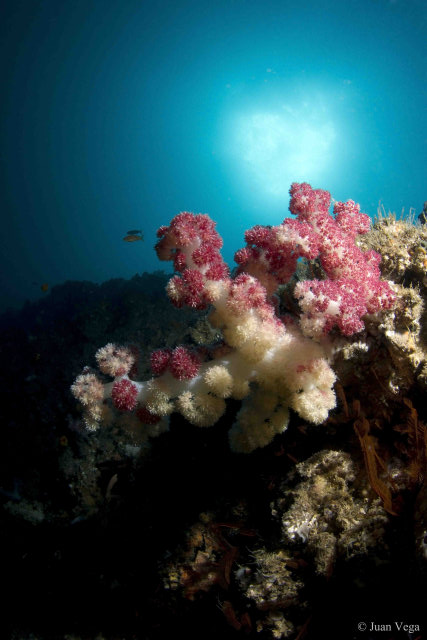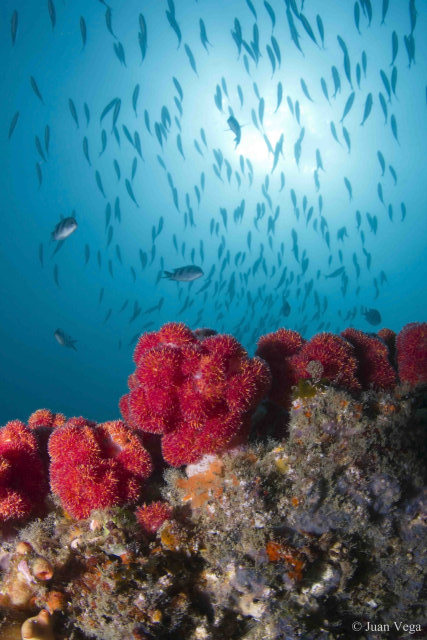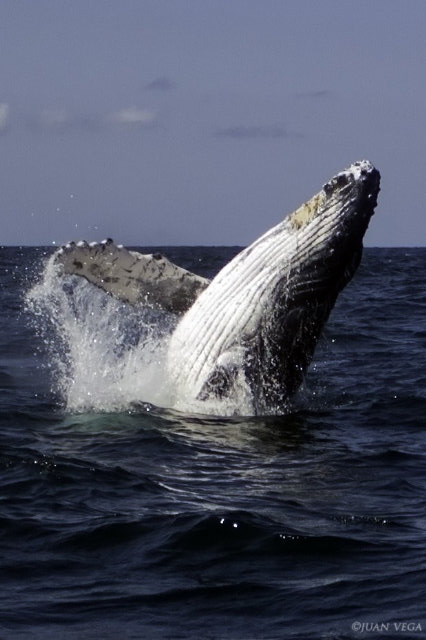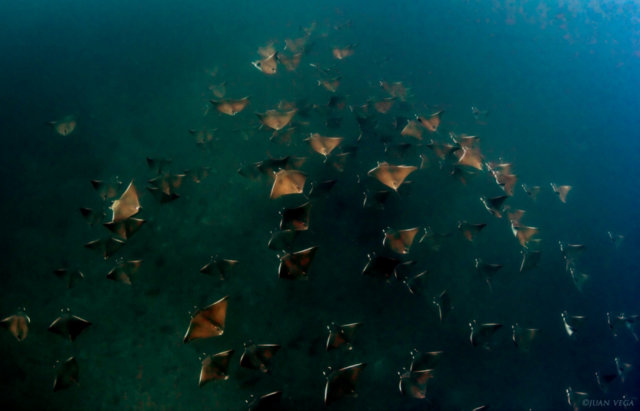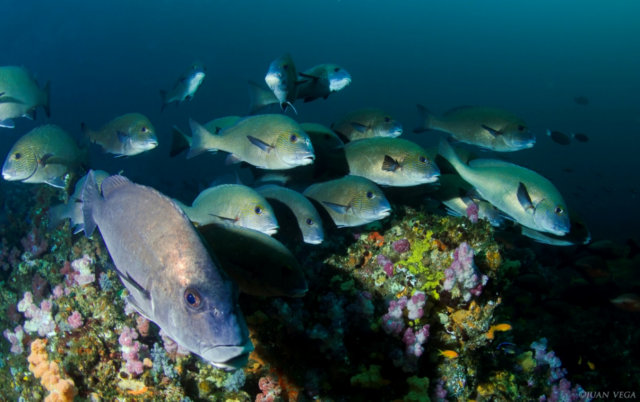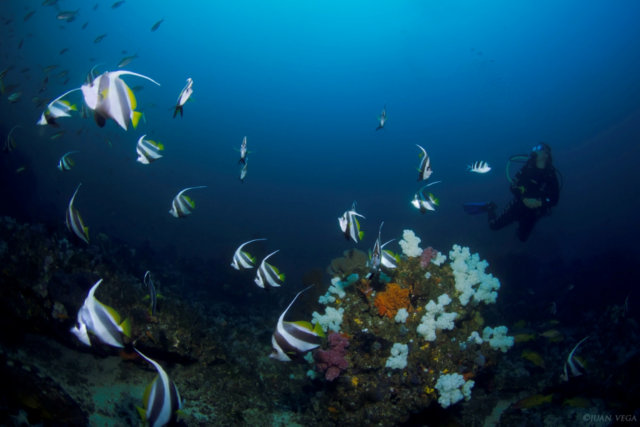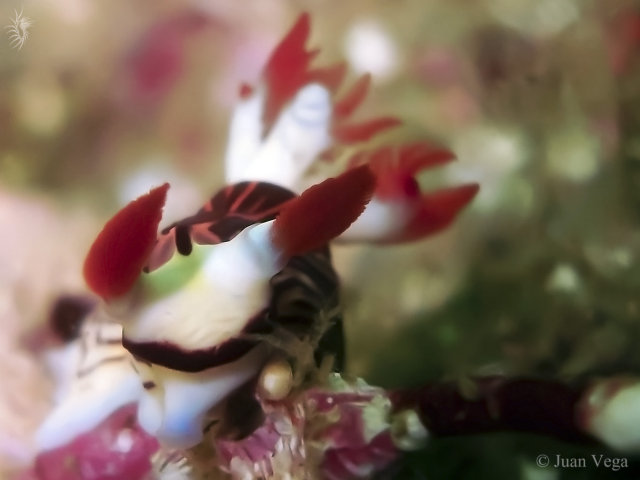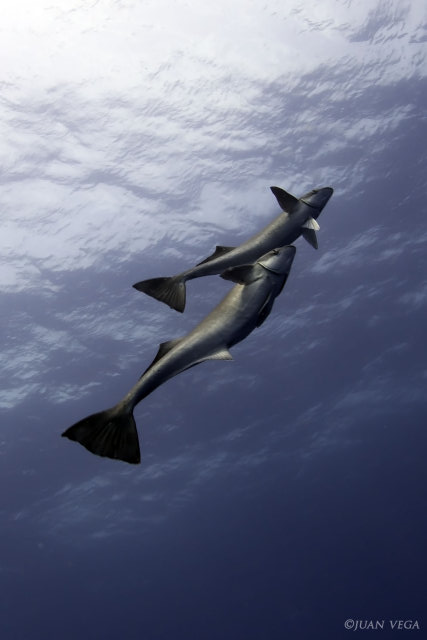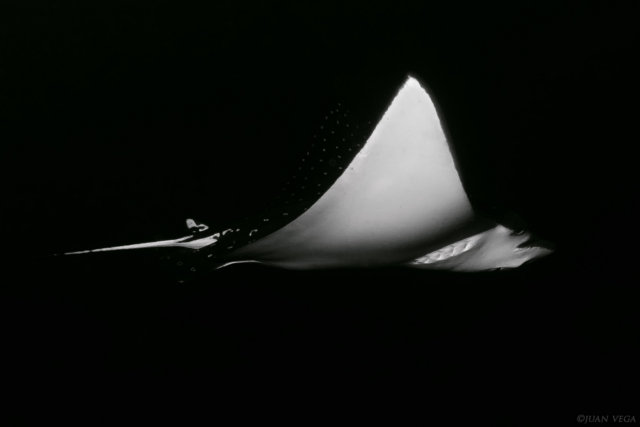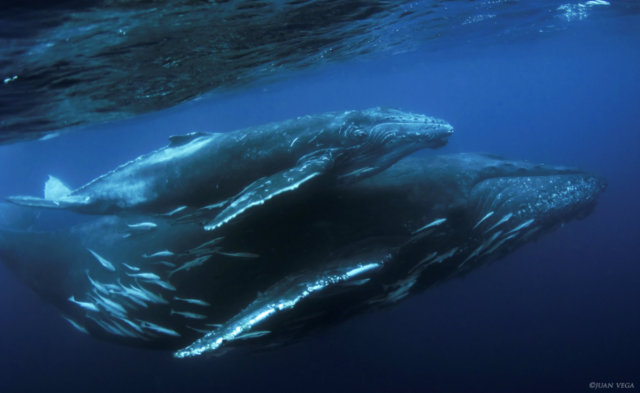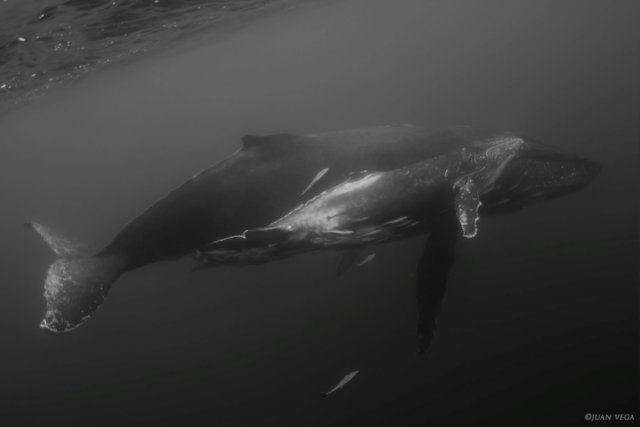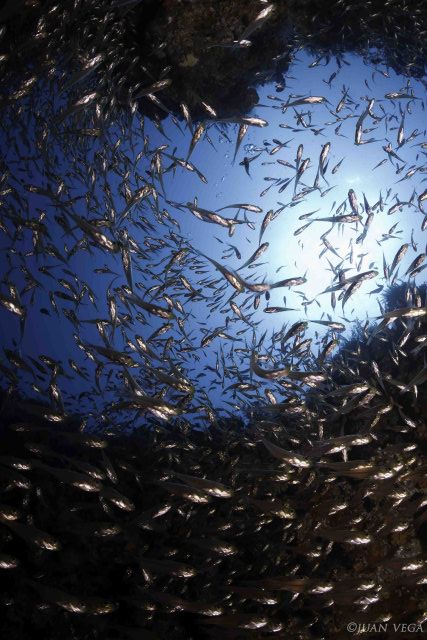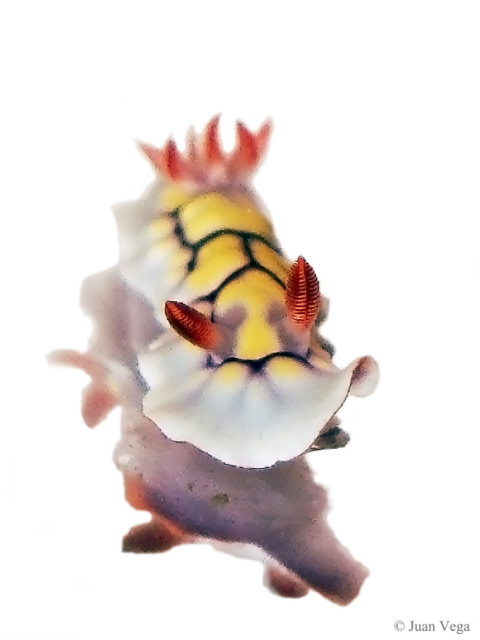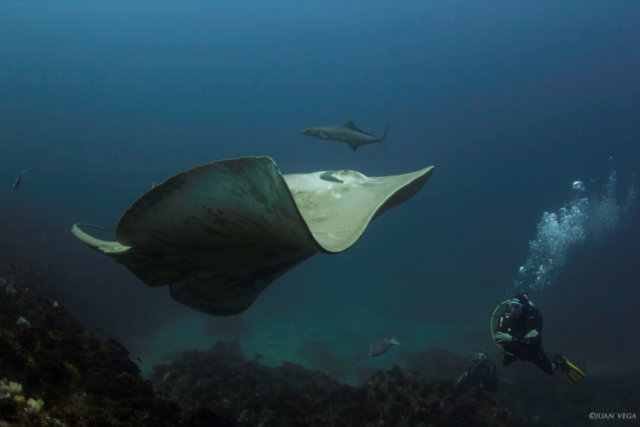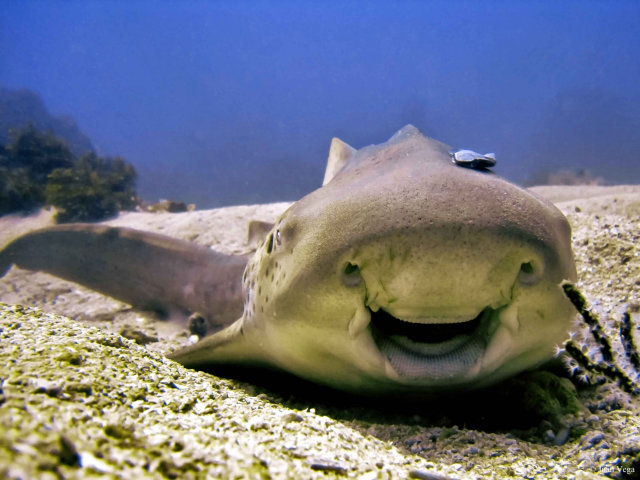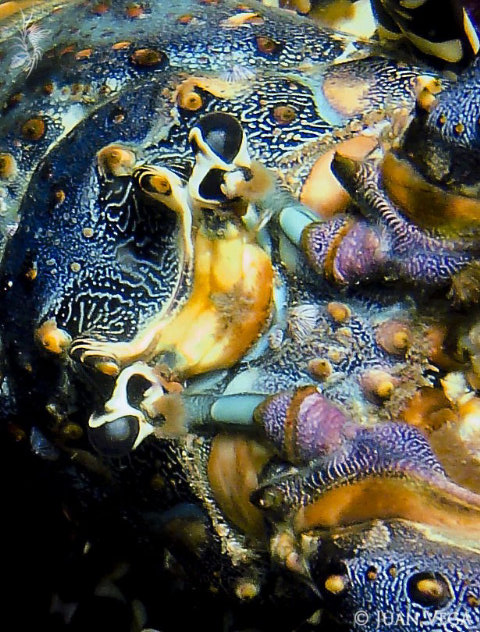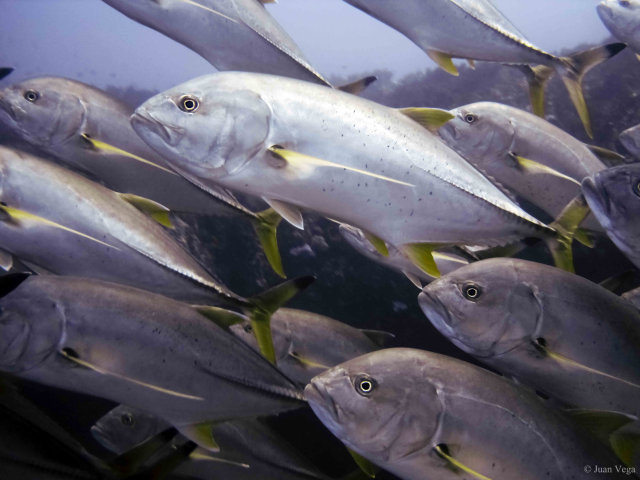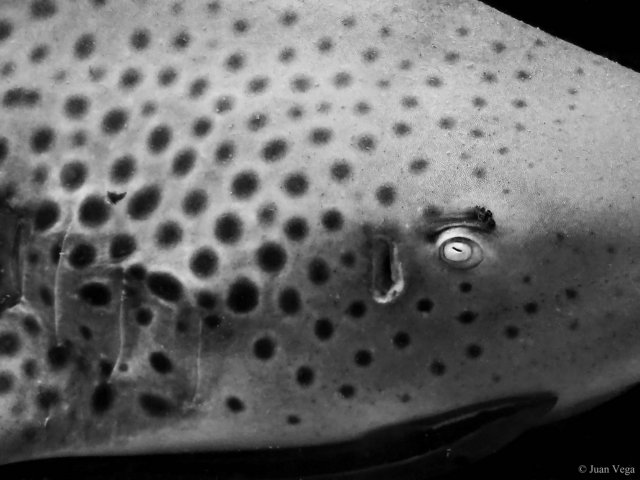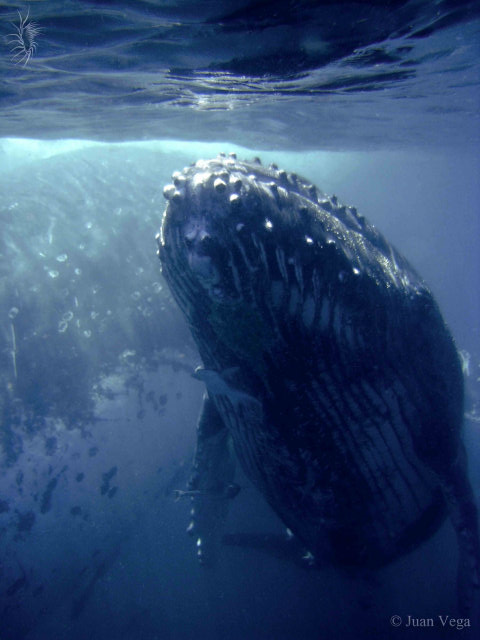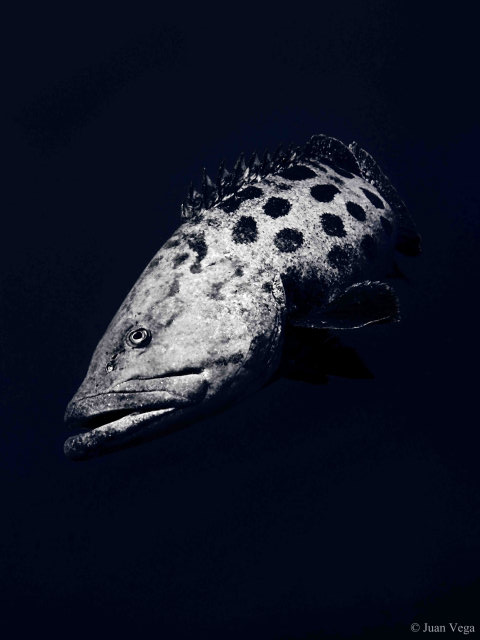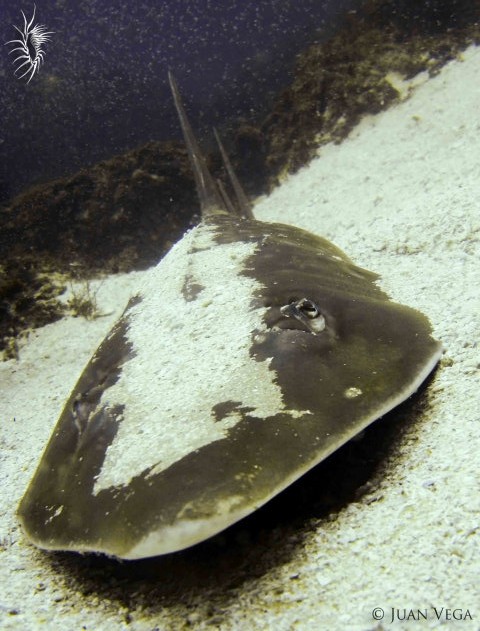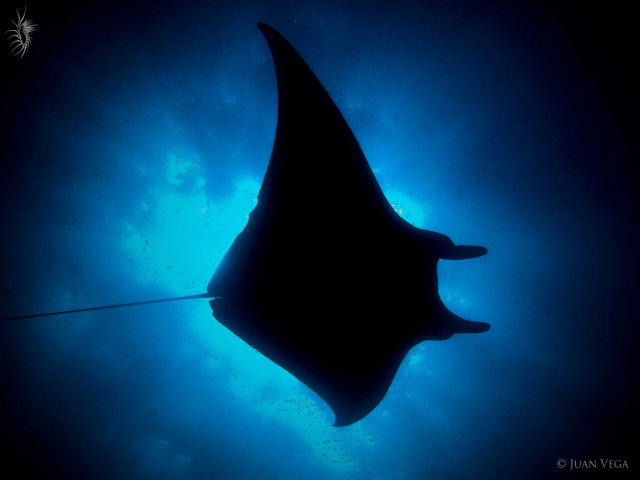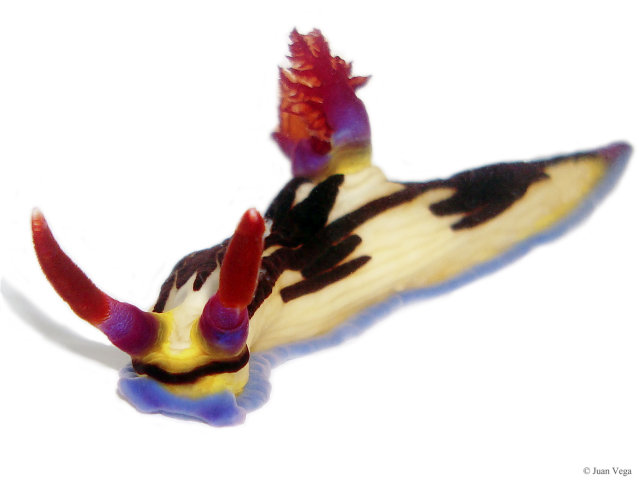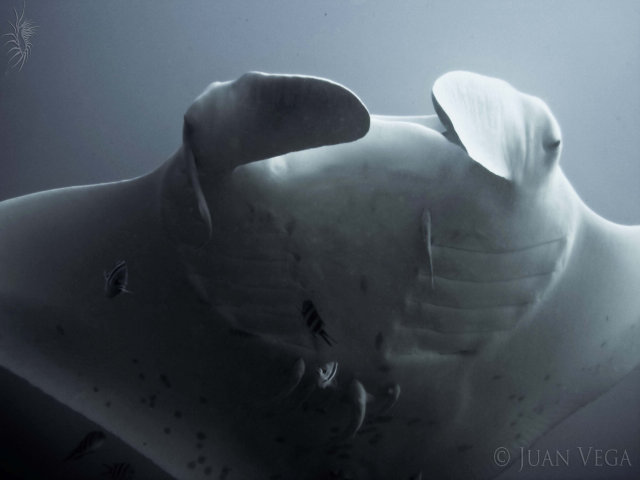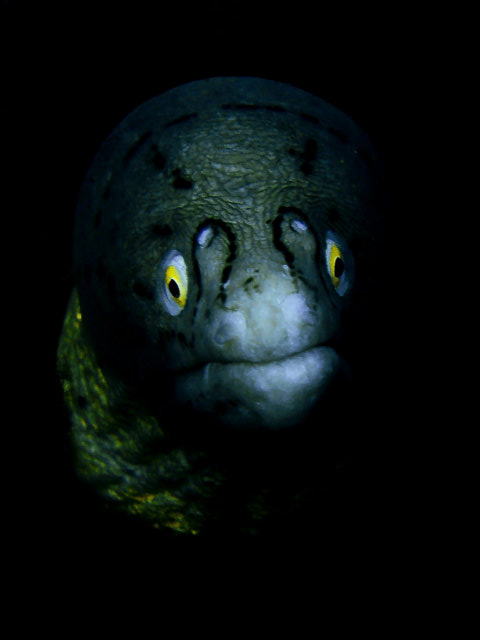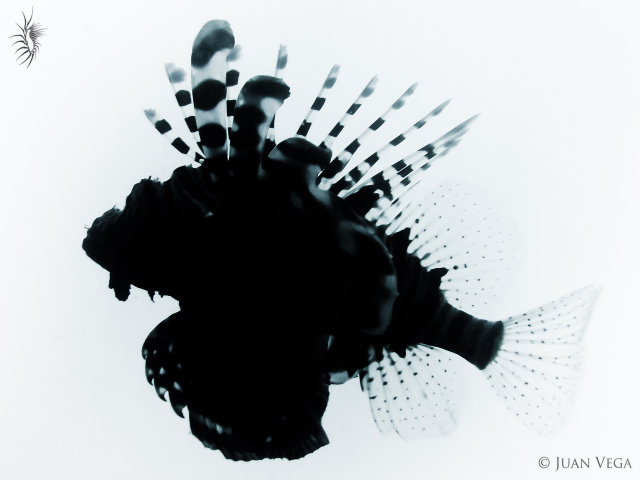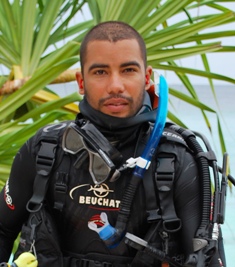
Juan Vega
Reisedaten
Tour:
Zavora - Mozambique
Zavora is a small village located in southern Mozambique, approximately 500 km north of Maputo. The climate is sub-tropical, meaning hot summers and cooler winters, although daytime temperature rarely drops much below 20degrees. November-January usually sees the most rain, whilst February is the month when cyclones might form, but the good news is that the rest of the year is generally dry and sunny!
The best way of getting there is by flying either to Johannesburg or Maputo, and from there catch a connecting flight with the Mozambican airliner, LAM, to Inhambane. From Inhambane it is 1,5hrs by car, pick-up can be arranged with Mozdivers prior to arrival.
Accommodation:
The dive centre is based at Zavora Lodge. Here there are cheaper, shared rooms for backpackers, self contained guest houses as well as hotel-style accommodation. The lodge has a restaurant and bar overlooking the bay, where is winter you can have breaching whales with your breakfast or sunset drink! The food is generally western style, with a few local options available.
For those looking to spoil themselves, Dunes de Dovela offer luxurious eco-accommodation carefully integrated in the lush coastal forest, overlooking the dunes and the ocean. The environment and service, along with the outstanding French-mozambiquean crossover cuisine makes this one of the most excellent places to stay in Mozambique! The only real downside is that the lodge is situated 10km (on sandy village roads) from the dive centre, so for those diving every day it might be a bit far. It is still worth looking into staying there for parts of your trip.
Diving:
The only operational dive centre is MozDivers, run by Jon Wright, an experienced technical diving instructor. There are dive sites suitable for all levels of diving, from novice to tech, although it is advisable to at least have an advanced certification, as many of the dive sites only starts at around 25 meters. The bay is also home to the wreck of the Klipfontein, a beautiful cargo/passenger ship which sank in 1953 and now rests on the sea bed 53 meters below the surface. This is a dive not to be missed for divers with technical diving experience, whether it is on twinset or re-breather.
The dive centre teaches PADI courses from Open Water to Dive Master, as well as IANTD nitrox/trimix technical diving courses.
It is hard to determine a best time for diving in Zavora. The cold winter temperatures bring with it one of the most amazing mammals on earth, the Humpback Whale, and it is also the time when it's most likely to spot Manta rays. Summer has nice, warm waters, up to around 27-28 degrees, and usually clear blue water full of activity, but there is a higher risk of rain and wind.
Things to do:
Diving is without a doubt the key activity in Zavora, but there are other things to do also, for those who don't dive, or for days without diving.
Horseback riding is one of the always popular activities. After helping getting the horse ready, a guide will take you riding on the beach, or inland through the lovely vegetation between lakes. There are also guided kayak tours available, either to go out on the ocean or to explore one of the many lakes in the area. Lunch can be arranged with a local family, giving you an unique opportunity to learn more about mozambican culture and everyday life in the village.
Those with a lot of energy will probably enjoy exploring the area on foot. The beach literally goes on for miles! If the tide is low, an early morning walk to Dunes de Dovela is recommended. It will take you a few hours, but you'll be rewarded with stunning scenery (as well as en amazing lunch once you get there!). At Dunes de Dovela you can go on a guided bush walk to learn more about the local flora, or borrow some binoculars and look at the many different species of birds.
And once you've done all this, there is nothing better than stretching out on the sand with a good book and a cold drink!
For more information about diving in Zavora:
http://www.mozdivers.com
http://www.zavoralodge.com
http://www.dunesdedovela.com
From magnificent macro to gentle giants
When we first visited Mozambique, some three years ago, Zavora was like an urban legend that the in-the-knows in Tofo was whispering about. Kind of like the 'I know someone who knows someone who's been to this village full of Manta Rays, plenty of sharks...'. We had come to Tofo for the same reason everyone went to Tofo - to see the Mantas and the Whale Sharks. Only problem was, there wasn't any. For reasons unknown, no Manta had been spotted for a good three weeks and divers were getting desperate! That's when we got the word. 'I know someone who knows someone...' So we started asking around and as it turned out, one of the dive centre managers of this fabled place happened to be in Tofo, told us that the area was teeming with Mantas, and so we hopped on a 2 hour ride to see what the fuzz was all about. We were not disappointed. We saw more Mantas than we cared to count, there were sharks, trevally, barracuda and, not least, space on the boat! Now, three years later, Zavora is no longer a quiet whisper. It is one of the most sought after dive spots in Mozambique, and rightfully so!
About two years ago, a year after our first visit to Zavora, we were weighing our options of where to go for work. Remembering the amazing time and the incredible marine life we had gotten a taste of a year earlier, we both voted for Mozambique as our first choice and luckily the dive centre was in need of an instructor, whilst the research centre could do with an assistant. Now, Mantas, sharks, rays and nudibranchs are all part of our everyday life, but that doesn't mean that they have stopped amazing us. On the contrary, they keep us amused, entertained and coming back for more as they show us new sides to their behaviour both in interactions with divers, as well as with each other. And with that in mind, I would like to share a little story from a regular day at 'the office'.
It is September, winter is coming to an end. The air is warming up, but the water is still on the chilly side holding about 23 degrees. A group of divers is getting ready at the dive centre. Most of them have travelled all the way from Europe to see Mozambiques main underwater attraction - the Manta Ray! Odds are on their side as May through September is usually the season that sees more Mantas on the reefs in Zavora, with the main concentration being on the shallow inshore reefs where these graceful birds of the ocean gather to get parasites cleaned from wounds and bites by specialised cleaner fish. By the time the divers have checked their gear, listened to their briefing and slapped on a final layer of sun screen, the tractor has taken the boat to the launch area and is now waiting to take the divers down and start the day of diving. Launching a boat in southern Africa can be challenging at the best of times as big waves and swells constantly pounds the boat back towards the beach. Luckily, in Zavora a shallow reef forming a tidal pool on low tide creates perfect protection from the waves, making launching far more pleasant as long as it's done on the right tide.
Soon we are on our way to the first dive site, an inshore reef called Area 51. The site has a number of cleaning stations, which are basically areas on the reef where the Mantas congregate to clean. There are two scientifically determined species of Manta (although it is believed that there might be a few more) and both can be seen on the reefs in Zavora. The Reef Manta (Manta alfredi) is the smaller of the two, and also the most commonly seen. This Manta is fairly residential, meaning that it probably lives along the same stretch of coastline its entire life. Manta birostris, or the Giant Manta, can grow up to 7 meters. This Manta is an ocean traveller, known to travel great distances, and is less common to see than the Reef Manta. Zavora Marine Lab. has been conducting research on Manta Rays since 2009, and has a database that contains more than 200 individuals identified by the unique spot pattern on every mantas belly. On Area 51 the Mantas can be seen cleaning as shallow as 6 meters, allowing for long dives and plenty light for photographers! Today we are in luck, and 5 minutes into the dive we see the unquestionable shape of a beautiful ray. The viz is bit poor, 7 meters at the most, but that really doesn't matter when you have a 4 meter big Manta ray circling over your head! The ray stays with us and checks us out for a good 5-10 minutes, going around and around the cleaning station followed by a train of remoras and cleaner fish. However many times you experience these kinds of encounters, it never fails to mesmerise you. These rays are so graceful as they seemingly effortlessly glide across the reef, you forget time, place, even poor visibility! Eventually the Manta finishes its wash, and with a last sweet above our heads disappears into the rain of plankton. We hang around for a bit, hoping it will return, but to no avail. Having spent the first half of our dive with one of the largest animals frequenting the bay, we now turn our attention to one of the smallest - the nudibranchs!
Zavora Bay is full of sea slugs - so far more than 220 species has been identified, about 30 of them undescribed by science, and Area 51 holds one of the highest concentrations. Take your time, look closely and you'll see them everywhere! We find a few large Spanish Dancers seemingly sleeping tightly after last nights' fiesta, two Hypselodoris mating and a handful of other well camouflaged little slugs feeding on hydroids or hiding under sponges. We also find some beautiful peacock mantis shrimp busying themselves with cleaning their houses, and some nice squat shrimp hiding under an anemone. A white Tip Reef Shark cruising past wakes us up from our meditative state, and I think everyone is surprised to see how quickly one hour has past, there is definitely some reluctance when the 'up' sign is given! But we have another dive to do as well, and if we want to have a reasonable amount of bottom time on that one, we better get out of the water. On our way up a huge group of fusiliers hurry past. Ten seconds later they hurry past again. Followed by a nice group of pickhandle barracuda. And the show is, as usual this time of the year, accompanied by the deep baritone voive of a singing Humpback Whale. What better way to spend your safety stop?!
After an hour on the surface, warming up in the pleasant spring sun, watching the humpbacks breach in the distance we start kitting up for our second dive. Seeing that there was only one Manta cleaning in Area 51, we would like to try our luck at the cleaning stations around dive site called Witch's Hat. This dive site is part of the same inshore reef system as Area 51, but lies several kilometres further south. The reef starts at around 12 meters, with several cleaning stations. It is common to find Leopard Sharks and Nurse Sharks, as well as large Fantail Rays resting in the sand on this reef, and it is also the site where we most often come across Frogfish. In other words, always something to look at!
We make our descend over the 'hat' from which the reef was named, and spend some time looking at some Yellowedged Moray Eels who are hiding under a ledge. By the time I have made my photos, the group is nowhere to be seen, but seeing I've only tagged along to take pictures today, I'm not too worried. I head towards the closest cleaning station, hoping I at least can get some 'belly-pictures' for the research centre to identify. That's when I see the huge shadow in front of me. I can't believe my eyes. It was a Humpback mother and calf! They slowly pass me no more than 6-7 meters away, seemingly curious as to who I am and what I am doing. I all of a sudden remember that I am holding a camera, but by the time I have it ready they are gone. I curse myself for getting so distracted and for being so slow. I set the camera to film in case they decide to come back. I get to the cleaning station, but there are no Mantas to be seen. I stay put for a few minutes before I slowly start my swim to the next station. Again, I see a huge shadow before me. I can't believe my luck! More whales! It's an adult, slowly swimming past me. Then another, and another. I count 9 whales! This is absolutely insane! Never before have I even seen a whale underwater, and here I am, right in the middle of nine of them! This time I remember my camera, and start filming the playful whales. They seem to be playing some kind of chase game. First one whale passes me, then two, then another two. They are bumping into each other, flicking their flukes, spinning. All the while they are extremely careful not to touch me, yet I am right in the middle of it. I see some of the whales blowing bubbles. Are they mimicking me? My camera is out of battery, but at the moment I couldn't care less. This is the most amazing display I have ever witnessed. For almost 40 minutes the whales stay with me. Or is it me who stay with the whales? It doesn't matter. Being in the water with one whale is mind blowing. Being surrounded by nine whales for 40 minutes changes your life! With a slap of a fin or a flick of a fluke they could have taken me out. Yet they seemed to somehow understand that I was merely a fragile spectator, out to do no harm, and so they performed their show around me, hitting each other rather than me. It was only later I learned that what I witnessed was most likely competitive behaviour related to the courtship ritual performed by several males chasing, competing and trying to impress one female. I guess the reason they left me out then, was because they didn't particularly look at me as any threat to win the chick. It's ok. She wasn't really my type anyway.
Now this clearly was a good day of diving in Zavora. Not every day turns out like this. Although surprisingly many do! From June through September you're pretty much guaranteed to see Humpback Whales. Even if underwater encounters are rare, they will frequently breach, slap their tales or roll around right next to the boat. Manta Rays can be seen throughout the year, but they do seem to favour our reefs in the cooler southern hemisphere winter months. Still, with or without whales and mantas, diving in Zavora is always good. The reefs are healthy, the activity high. And even though the place has gained popularity over the year, it is still a somewhat hidden gem, an urban legend, in an ever decreasing world of good dive spots.
Juan & Sarah
